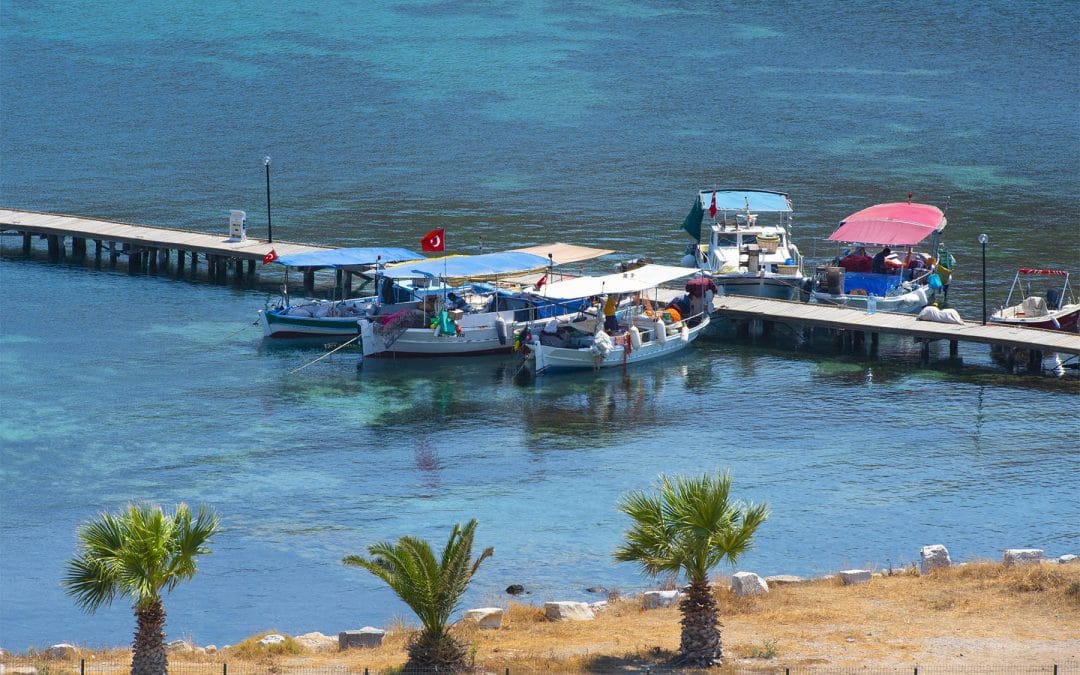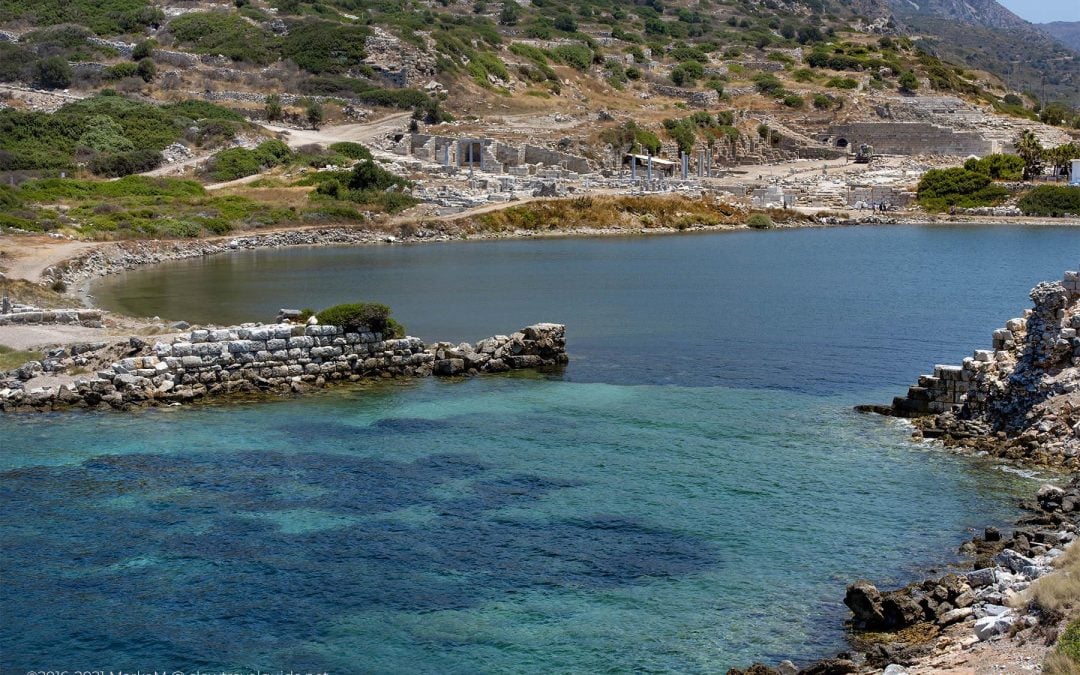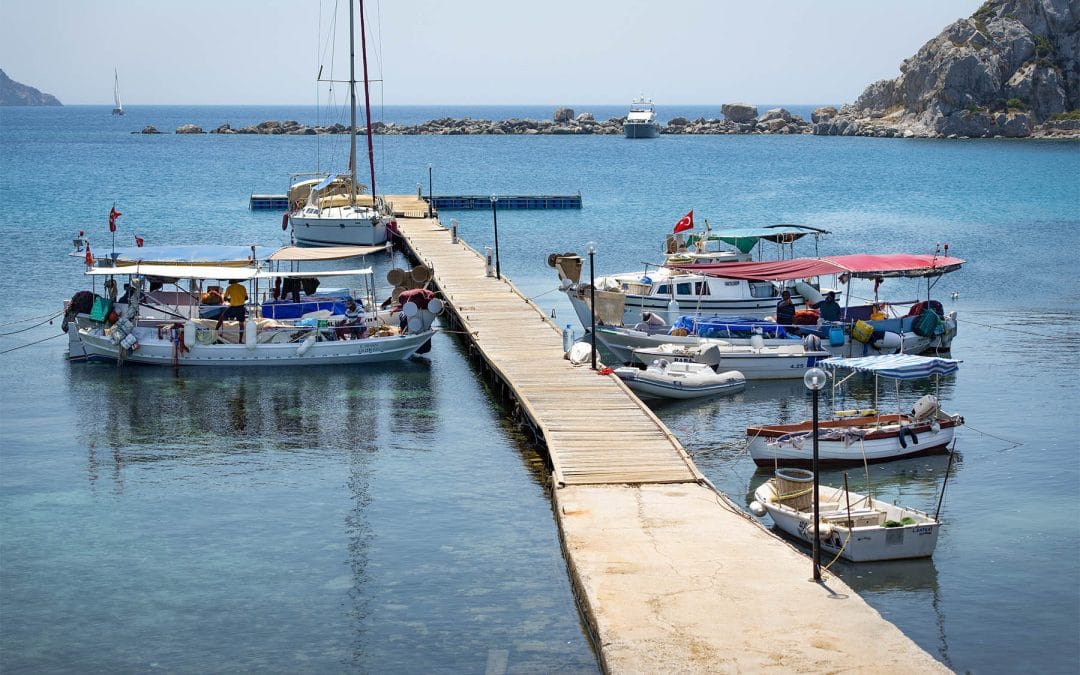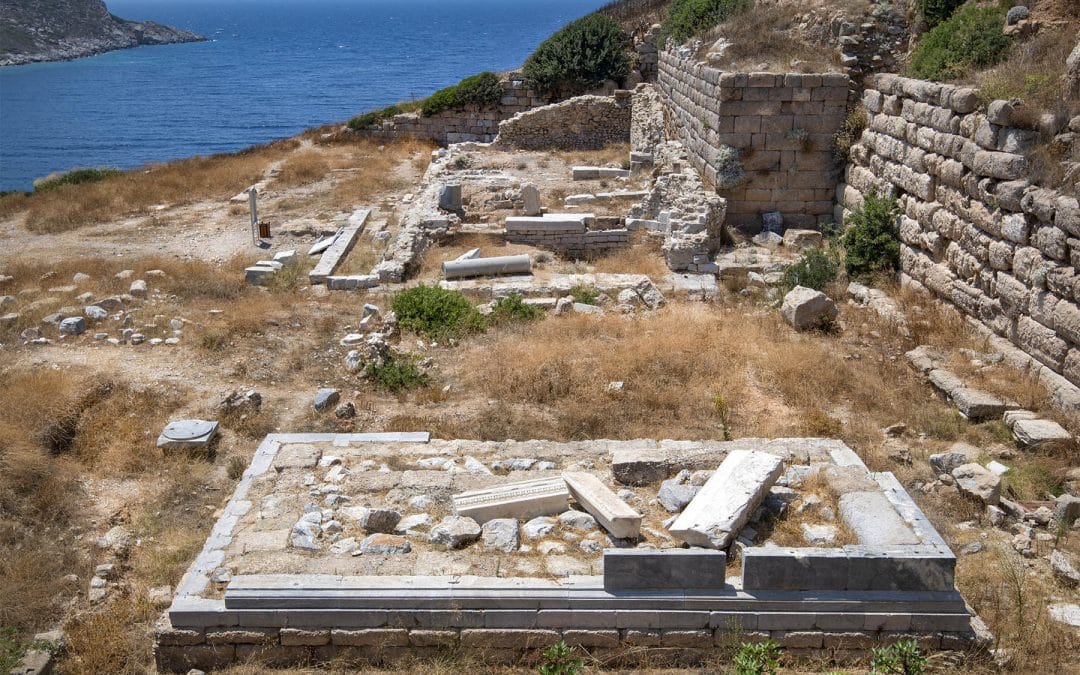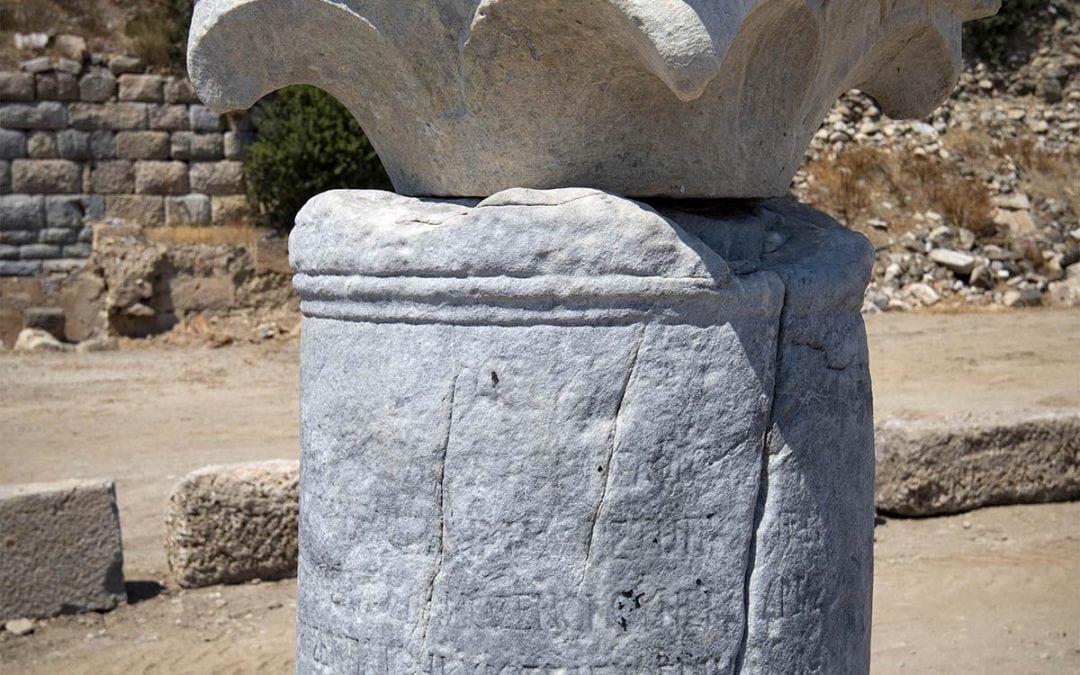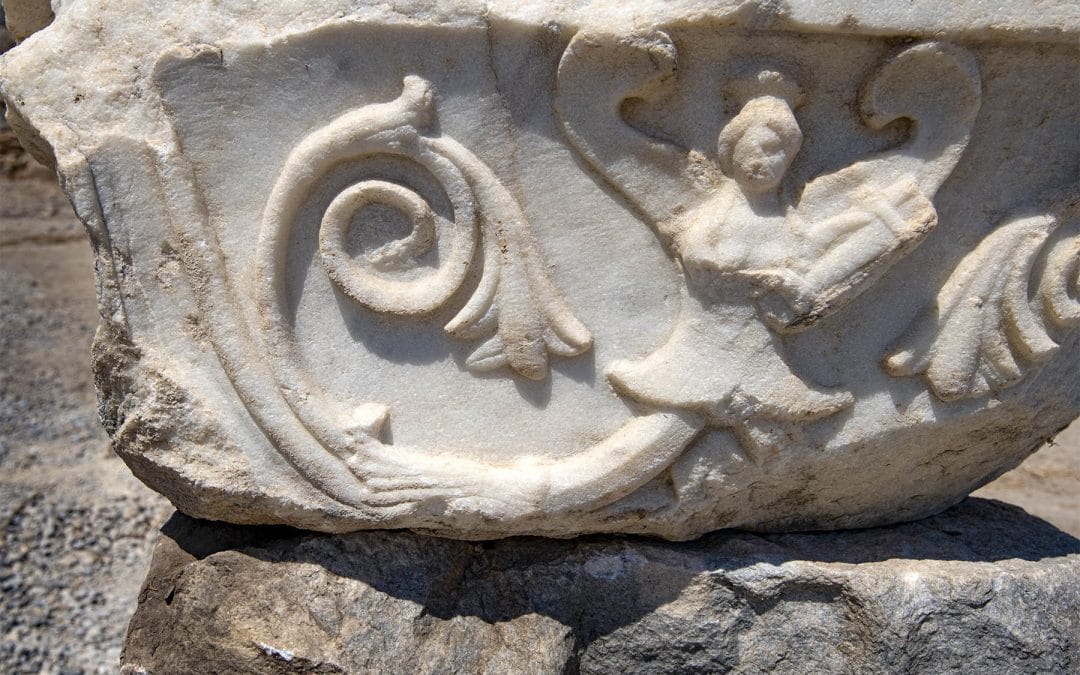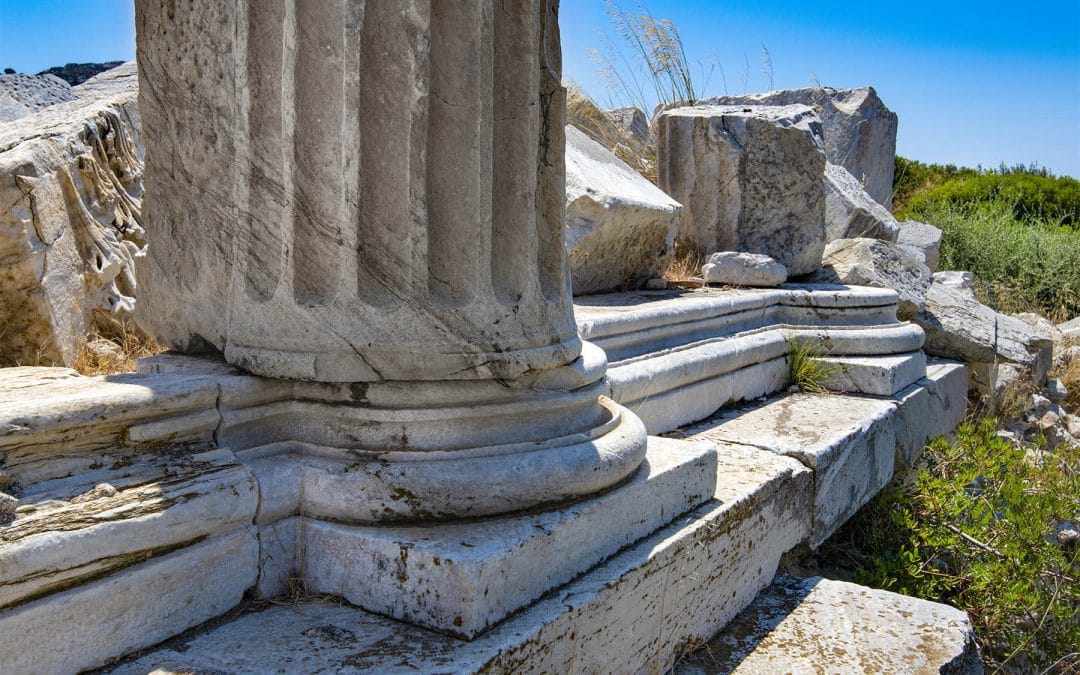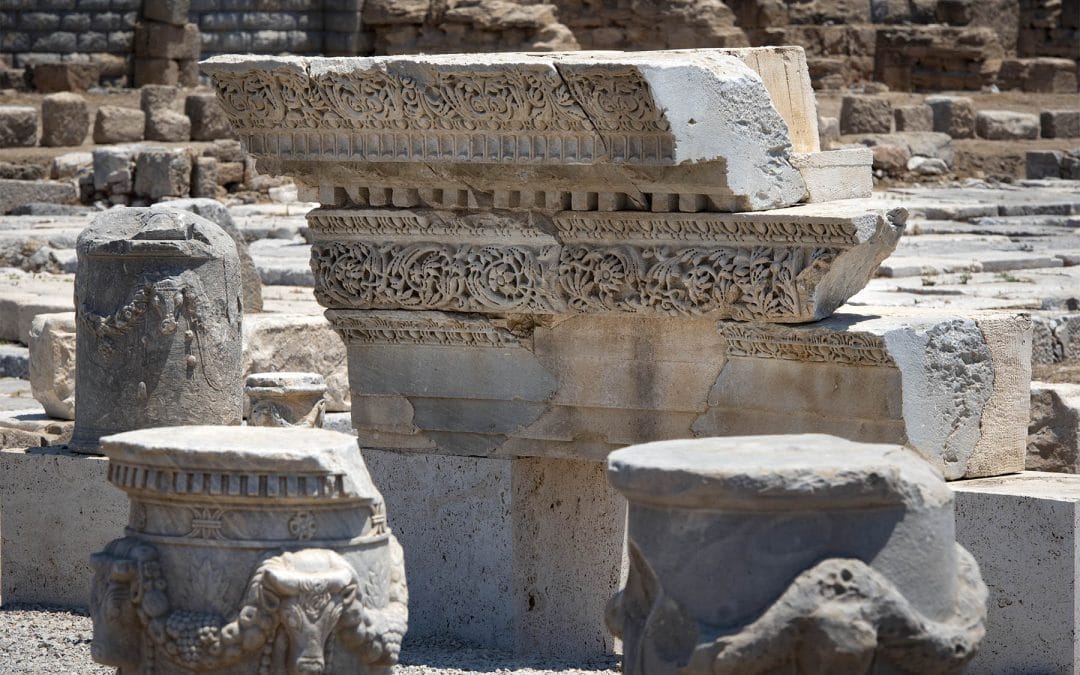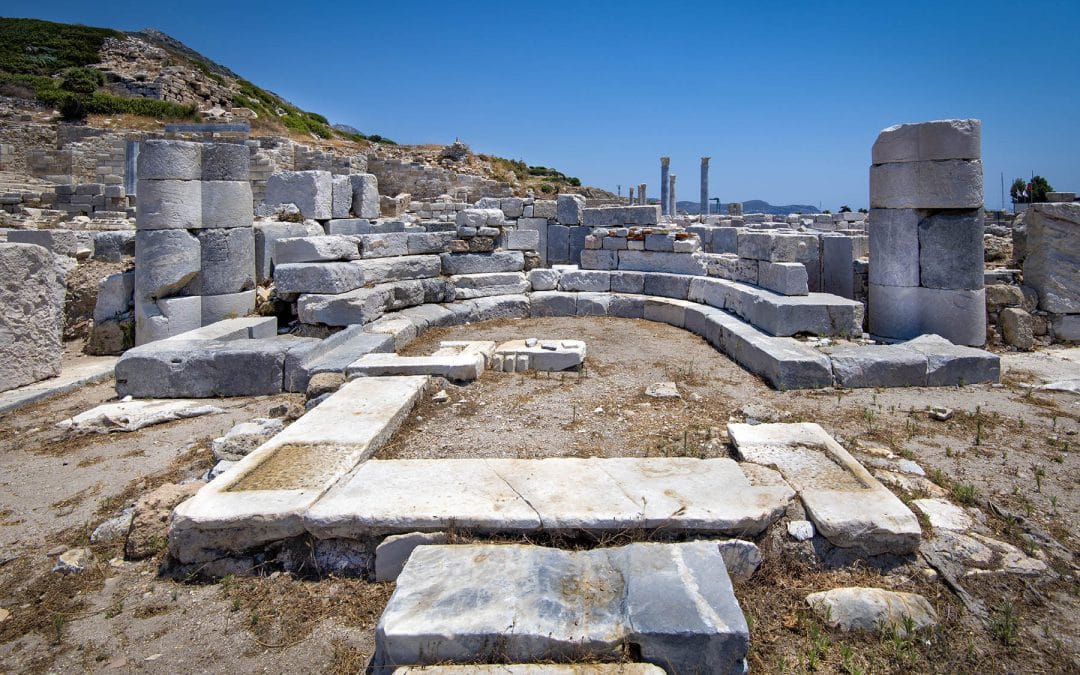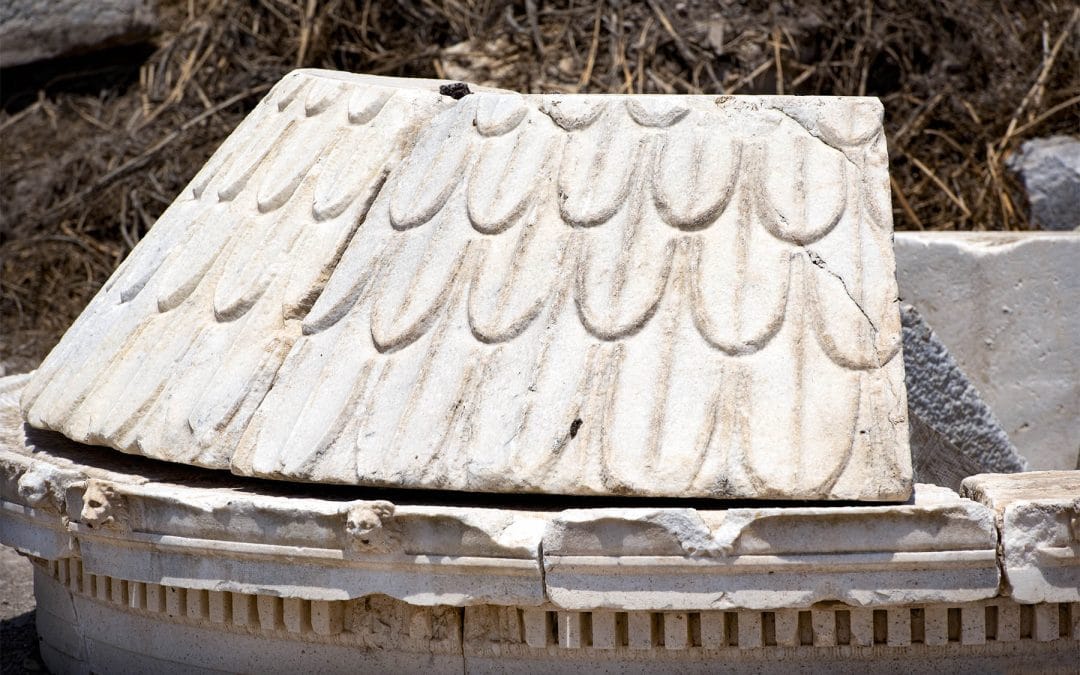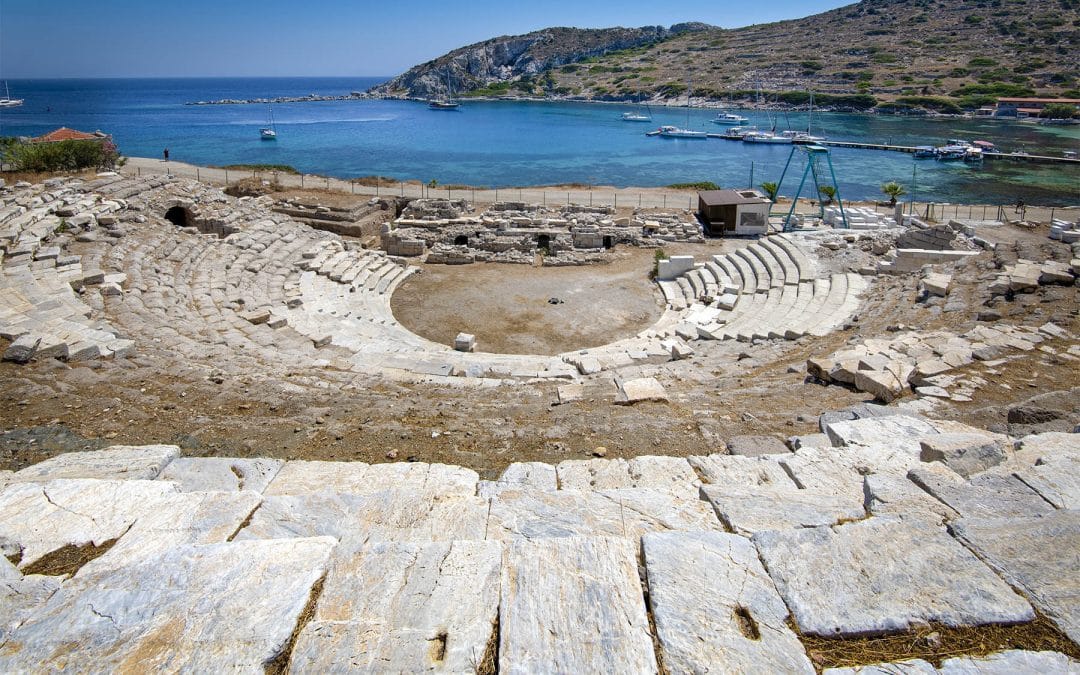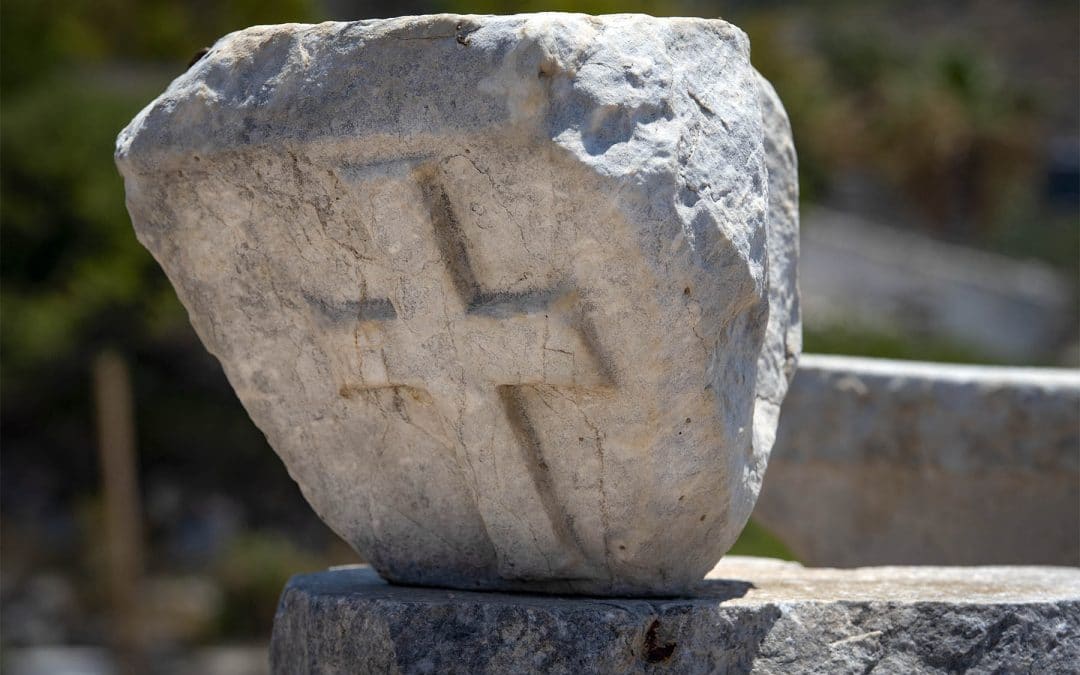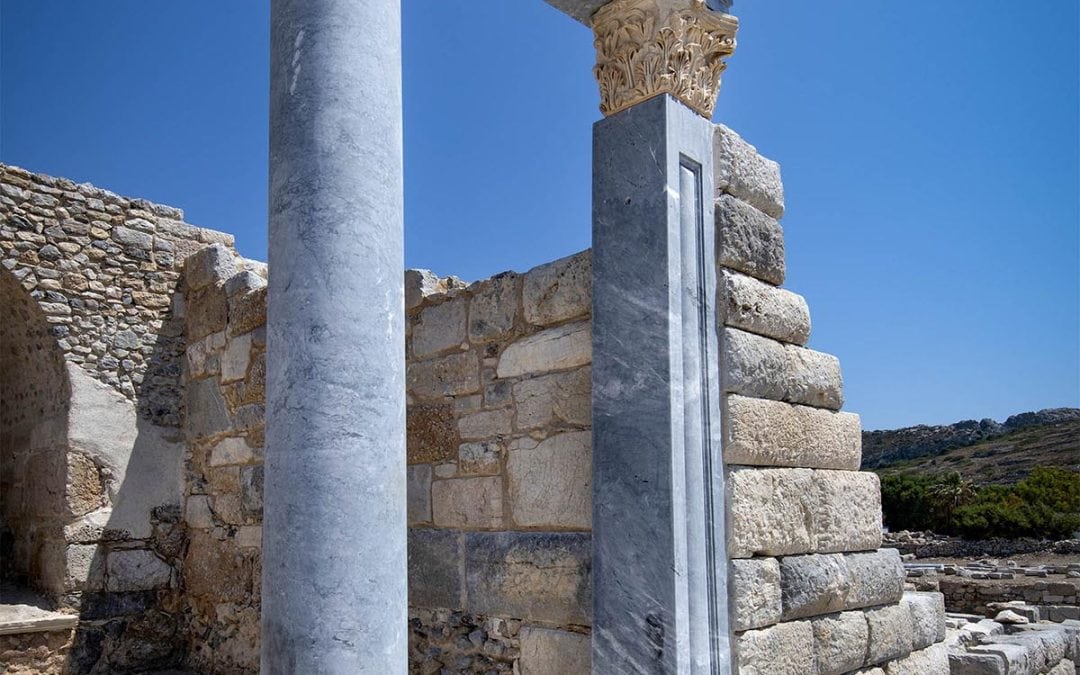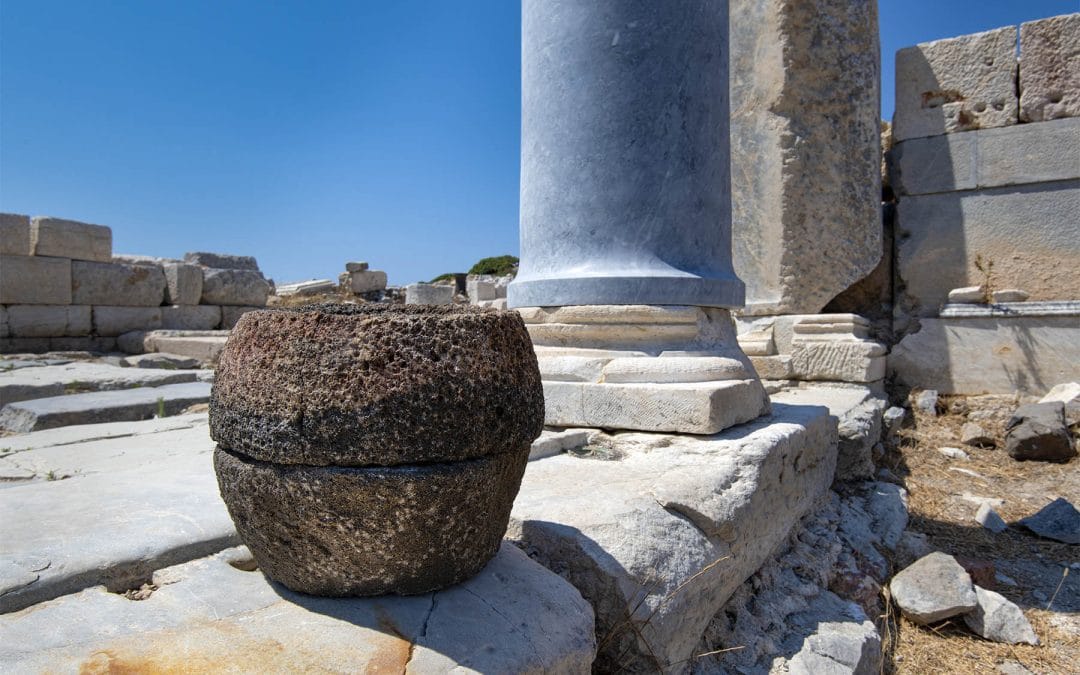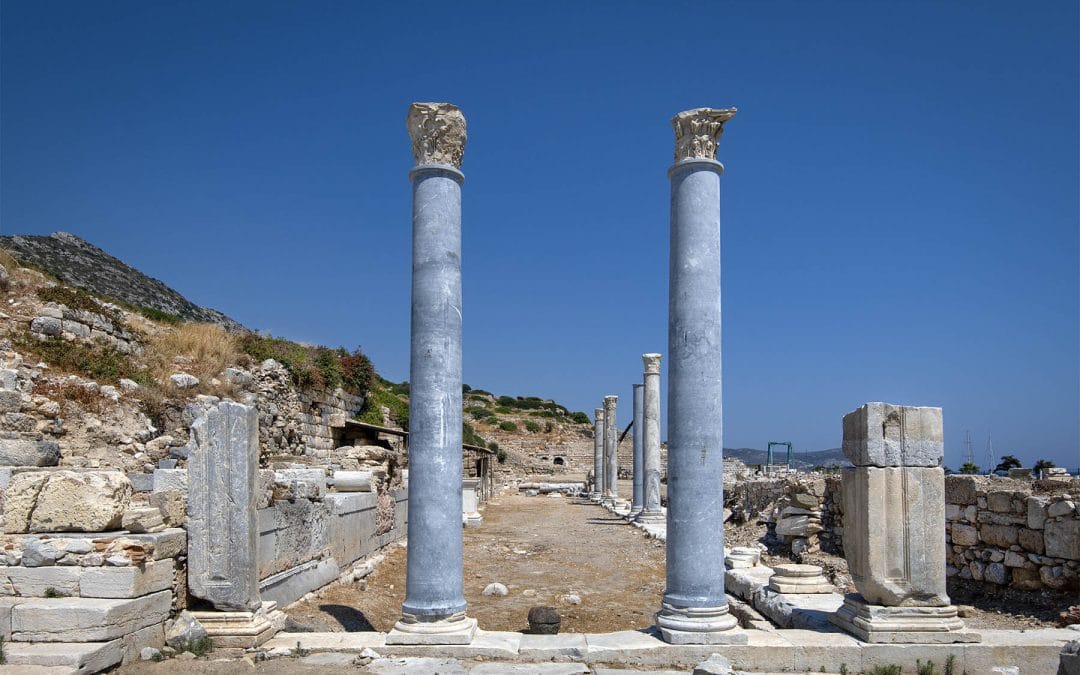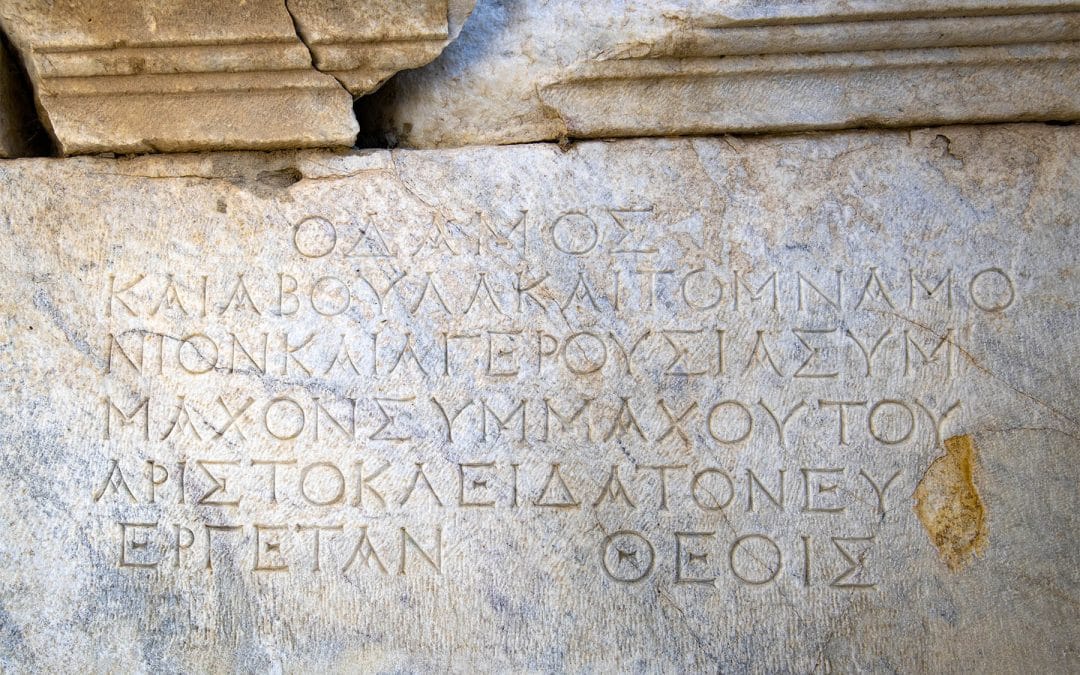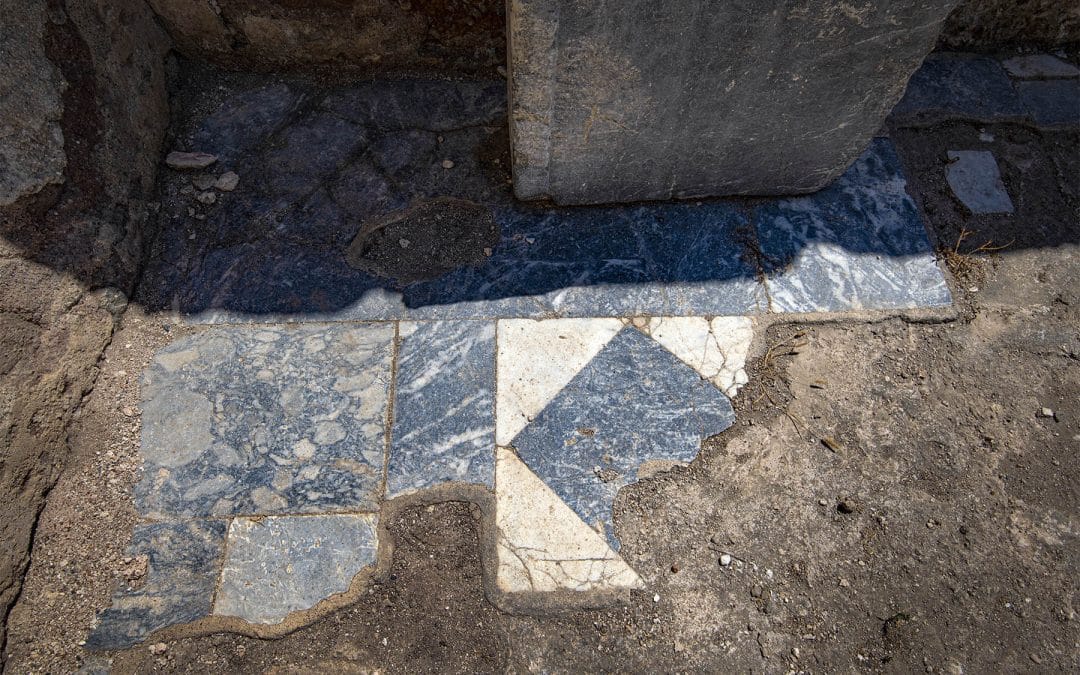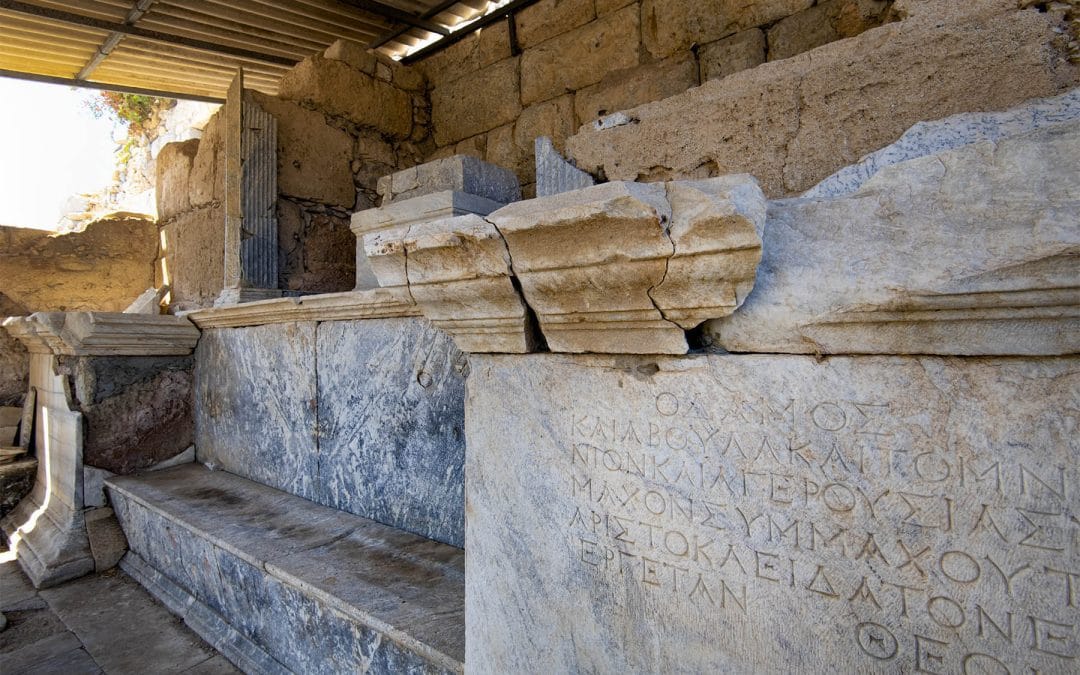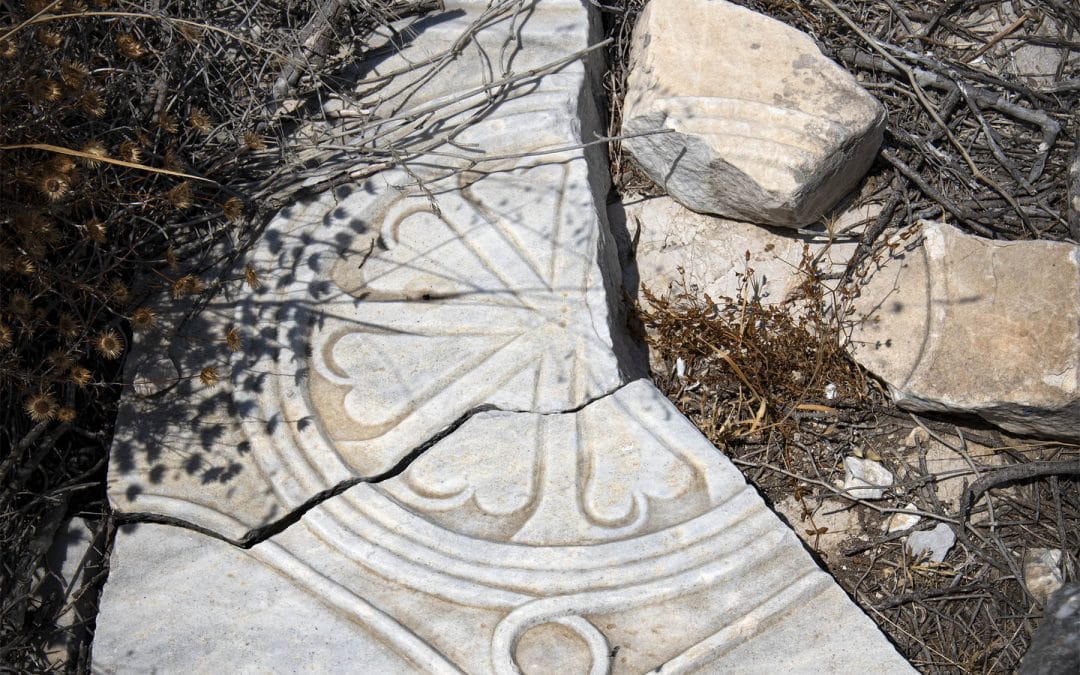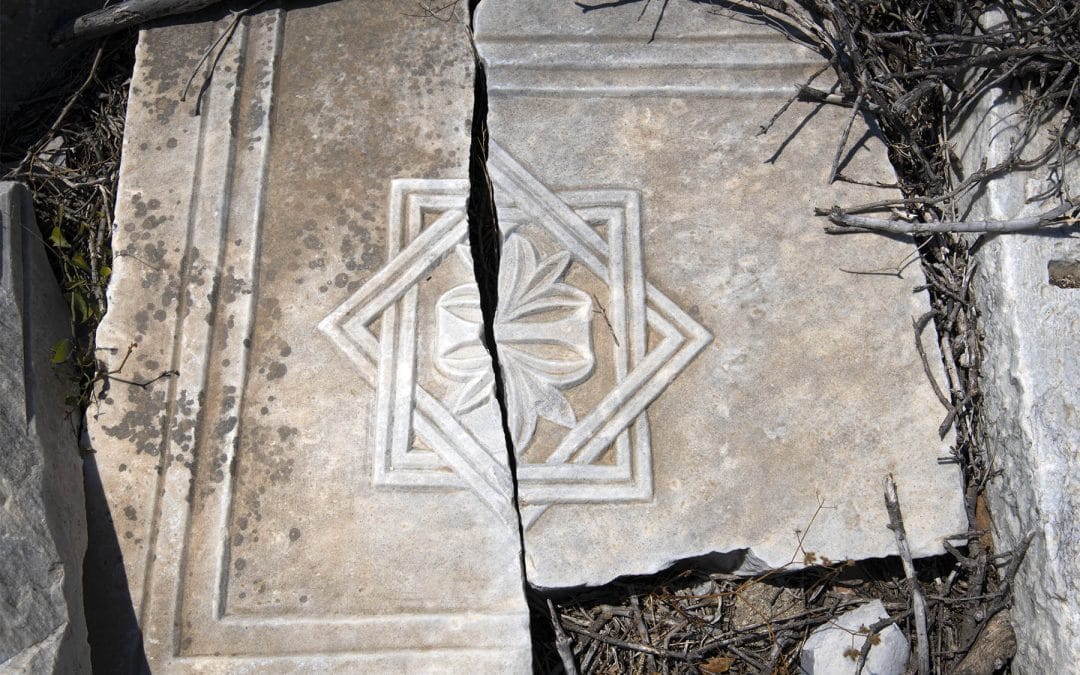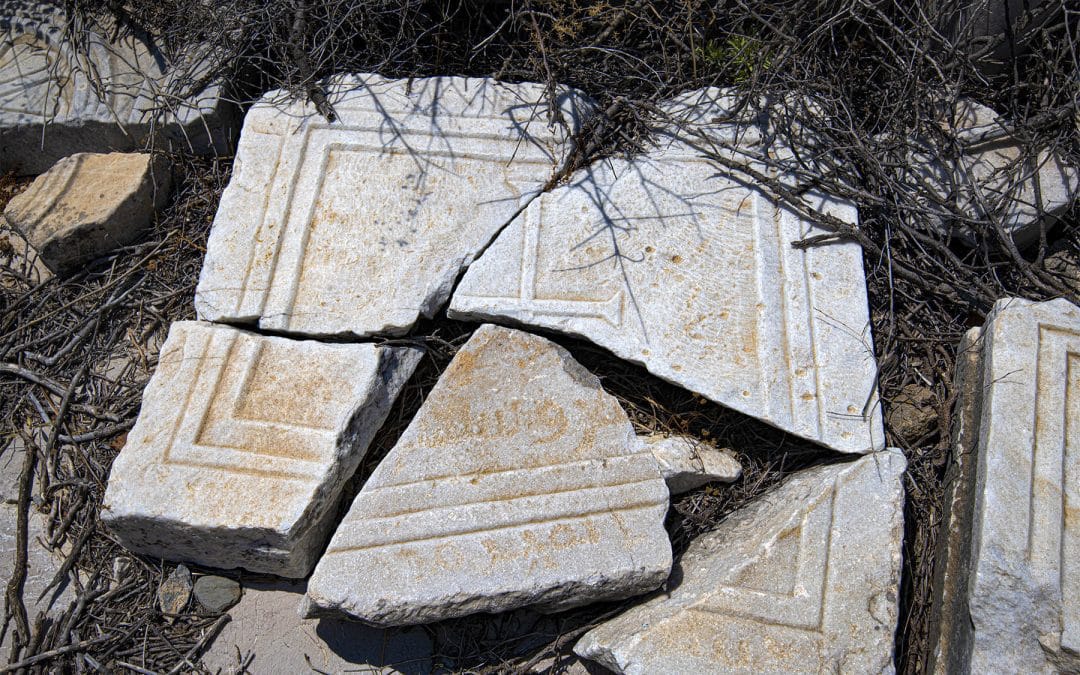Knidos, Datça
Knidos, City Of Love And Arabic Inscriptions
Knidos is one of those ancient sites which has a lot of attractive features. The setting is spectacular; there is a lighthouse (always a favourite with me), there are two harbours for the price of one :-), and as a bonus there are different appealing stories to tell about it.
Knidos takes you easily back in time.
The Knidos (or Cnidus) ancient site is a work in progress. Sitting on the tip of the magnificent Datça Peninsula, which is located somewere between the Aegean and Mediterranean sea.
You can explore the ruins and look in your imagination at how impressive a city it once was.
It is called the city of love. Find out why there are Arabic inscriptions in several locations.
Knidos’ Lighthouse And The Fortifications At The Cape Krio
A Dramatic Scene
Knidos sits in a spectacular and strategic location. In the past, the city stretched to the terraces on the mainland of the current Datça Peninsula and the tiny island opposite it, Cape Krio. A bridge connected the city’s two parts and served as a dividing line between the two ports.
Nature created an isthmus with the help of the Knidian people. Although now the bridge has disappeared. This long and narrow piece of land separates the two ports, the small military West port and the commercial East port.
The commercial port has not lost its function entirely; It is now used as a popular anchorage for sailing enthusiasts, tour boats and a small fishing fleet.
Knidos, An Active Excavation Site With A View
Ancient Cnidus was a colony of Sparta and one of the six cities in Asia Minor’s Caria and of Dorian origin. It was surrounded by a city wall built in the 4th century BC by King Mausolos of Halicarnassus and a necropolis that extended 7 kilometres outside the city. You can still see the fortifications protecting the port.
Harbour Heroon Seen From Cape Krio
The Impressive Harbour Street And Its Heroon
Knidos became a wealthy city in 600 BC and dominated the complete Datça Peninsula in 540 BC; when the Persians started to expand their empire, they controlled the entire Datça Peninsula. In the 4th century BC, Knidos developed from a wealthy and influential place to a cosmopolitan and significant metropolis.
In this environment, famous artists emerged, such as the sculptors Skopas and Bryxias, who worked in Knidos temples and others such as the Temple of Apollo.
Click here to visit the Temple of Apollo in Didyma.
Inside The Harbour Street Heroon
Ruins Of The Round Temple Terrace Or Tholos
Inscriptions In The Apse Of The Byzantine Church
City Of Love
At that time, the city received the famous and much-debated statue of Aphrodite in Praxiteles. The figure of Aphrodite was nude. The neighbouring city of Kos originally commissioned it, but they did not realise they should have said they wanted a dressed version of the goddess. Due to this, Knidos gained a masterpiece and a tourist attraction. Unfortunately, the original work no longer exists.
Detail Of The Crown Of The Fountain Of Boulakrates
The Sundial With A Dried Branch As A Gnomon
The head of Aphrodite was discovered by the American archaeologist Iris Love, who first excavated the circular foundation of the Doric Temple of Aphrodite in the summer of 1969 and found the head the following year. In terms of propaganda, things couldn’t be more perfect; an archaeologist named Love discovered the temple of Aphrodite, the goddess of Love. It put Knidos on the map, and even Mick and Bianca Jagger decided to come and visit Knidos.
Harbour Heroon At Knidos, Glorious Isn’t It?
What To Expect
Location: You can easily reach Knidos by car (check the map below). Check for Public Transport.
Nearest Airport: Bodrum Milas or Dalaman Airport.
Parking: Yes.
Terrain: Easy.
Stroller: No.
Entrance Fee: A small entrance fee (Museum Pass is valid).
Facilities: A cafe outside the museum.
Best Time To Visit: All year, depending on the weather.
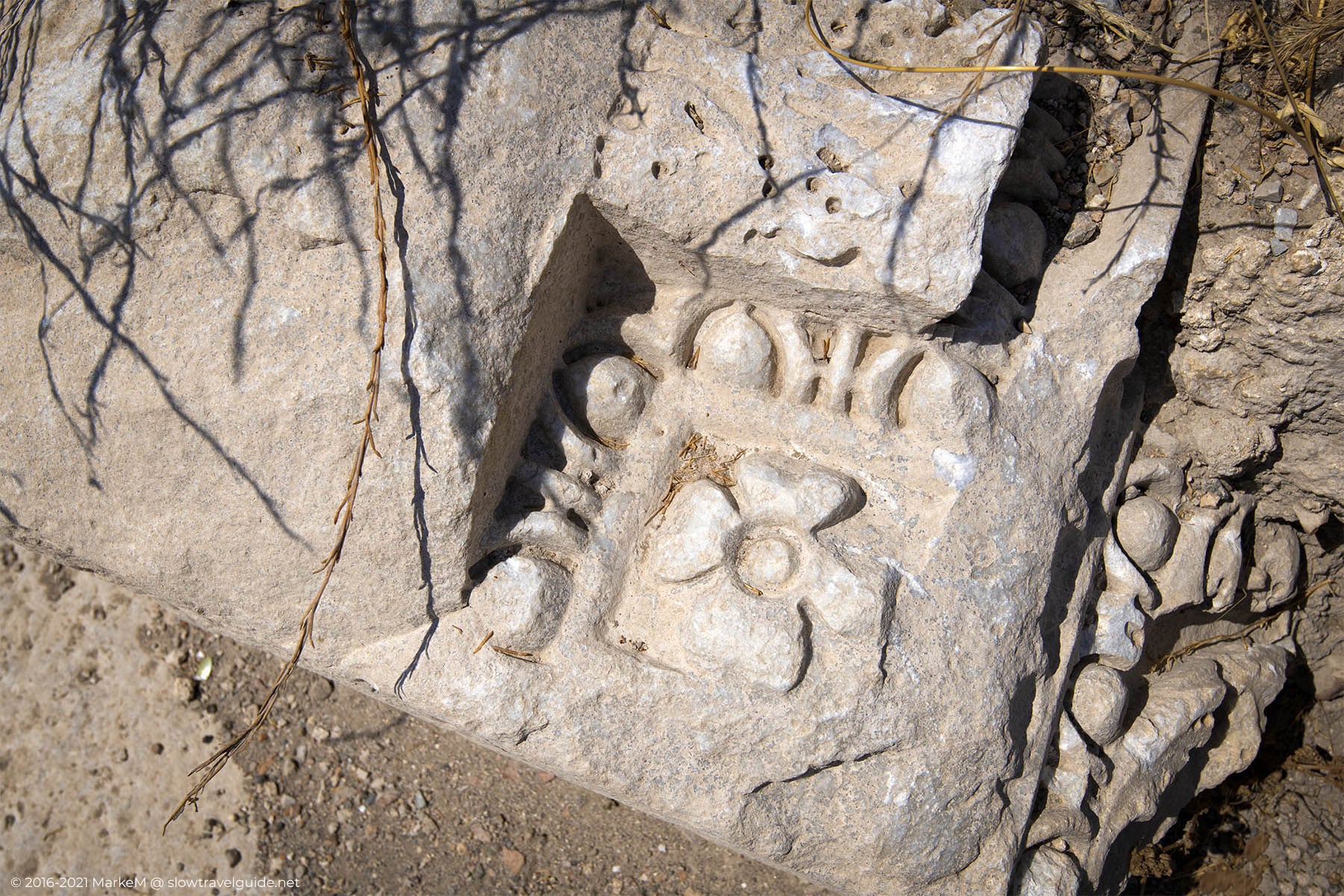
Arabic Inscriptions And The Decline Of Knidos
During the Roman era, Knidos, a “free” city, did not have to pay taxes to Rome, thus bringing in more wealth. Nevertheless, like many other Anatolian coastal cities, Knidos were attacked by Arabs in the 7th century.
You can still see Arabic inscriptions on one of the church floors, or as some people call it, graffiti.
The once glorious city further decayed after a series of pirate attacks and earthquakes; the citizens had to leave Knidos for better locations.
Famous Citizens And A Thriving City
Knidos had its best time during the Hellenistic era, with a vibrant business and economic life and a vital cultural, artistic, and academic influence. The Knidos medical school was almost comparable to the medical school in Kos (birthplace of Hippocrates).
This city was also home to the mathematician and astronomer Exodus, who even has craters named after him on the moon and Mars.
Maybe the sundial you can see on the site (see the photo in this article) was his idea? Sostratus, who built the trapezoidal porch in his hometown of Knidos, was the architect of the Alexandria Lighthouse, one of the Seven Wonders of the Ancient World.
More Arabic Inscriptions
Five reasons to visit Knidos:
You can take a ferry from the Bodrum Peninsula to the Datça Peninsula; this is a scenic trip of approximately 90 minutes. After that, follow the directions to Knidos. Click here to view the current timetable or book tickets online.
Driving yourself is worthwhile. The Datça peninsula is relatively unspoiled, with many beautiful stops and even vineyards, just in case you want to taste some Turkish wine.
Even if you have no interest in history or ancient sites, this place is fantastic due to its location.
Visitors rarely pass Knidos, so if you want to avoid crowds, this is the right choice.
The sunset here is epic to take lovely photos of.
A small entrance fee is required to visit Knidos (Museum Pass is valid). You will be happy to learn that there is a nice cafe/restaurant outside the museum area.
Getting to Knidos by car is easy because the site is clearly signposted all over the Datça Peninsula. If you rely on public transportation to get here, the Mugla Province website gives the timetable to and from the peninsula.
If you have any questions about a place, feel free to ask. You can send us a message through our contact page or leave a comment on our Instagram or Facebook pages.
You can also join our group Turkey Travel Photography on Facebook to share your lovely photos or experiences about Turkey.
Places Nearby
Datça, a visit to a quaint town (27 km)
Bodrum, the top sights in Bodrum besides the Bodrum Castle (39km)
Pedasa, is one of the best things to do in Bodrum (43km)
Turkish Wine Routes and vineyards in Turkey (30km)
Places We Recommend
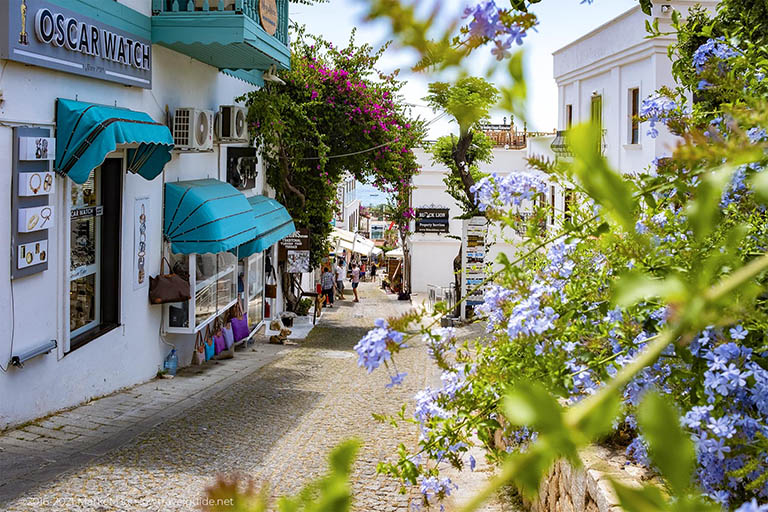
Kalkan
Kalkan, without any doubt one of these villages that seem to have it all: charm, seaside location, picturesque harbour and a Greek past that still is visible everywhere you go. There are narrow cobbled streets with attractive little shops and inviting restaurants to attract all types of tourists. (Read more)
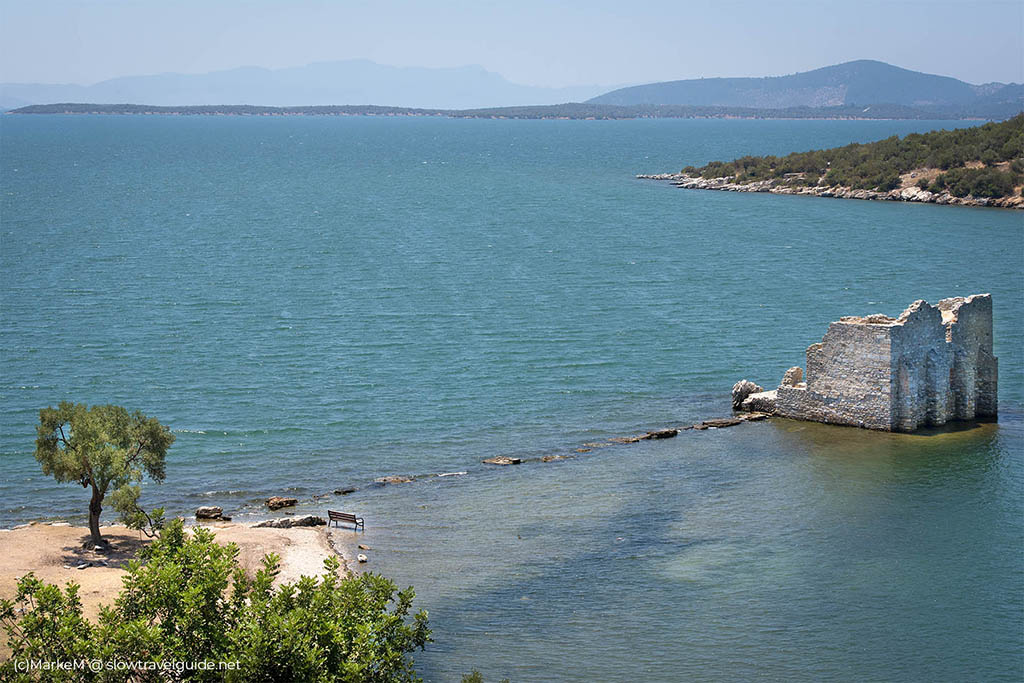
Iassos
Iassos is an often forgotten ancient site near the Bodrum Peninsula. Being probably more than 4000 years old, it was a prosperous town; the fishing trade generated its primary income. It is still a tiny fishing village with restaurants, mainly local seafood. (Read more)
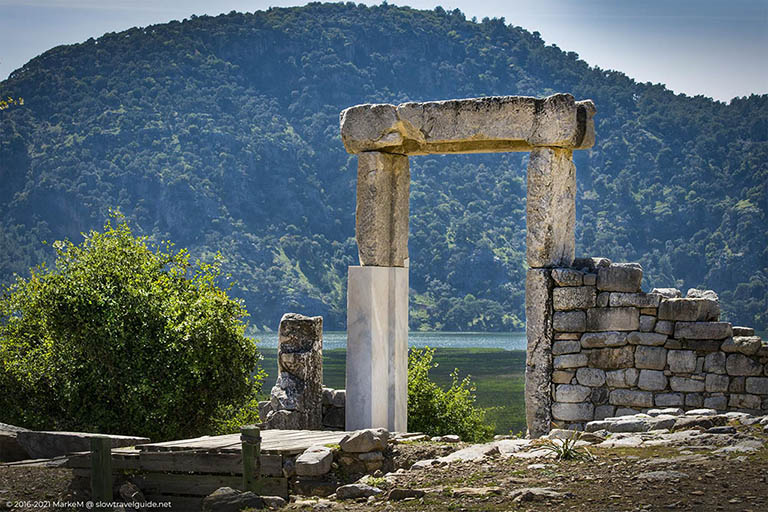
Kaunos
Near Dalyan, the ancient site Kaunos is known for its Lycian rock tombs, carved out the rocks overlooking the Dalyan river. An impressive sight and one of the major tourist attractions in the area. The numerous boat tours which are available are packed with people for a cruise on the river. (Read more)
© 2016-2022 All rights reserved by slowtravelguide.net.
The content of this website is copyright protected and the property of slowtravelguide.net.No part of this website may be reproduced in whole or in part in any manner without the written permission of the copyright owner.
Copyright ©2016-2022 Tüm hakları saklıdır. Bu (slowtravelguide.net.) web sitesinin içeriği koruma altındadır ve slowtravelguide.net.Buradaki hiçbir içerik (yazı,fotoğraf,video vb.) izinsiz olarak kopyalanamaz, alıntı yapılamaz,başka yerde yayınlanamaz.

